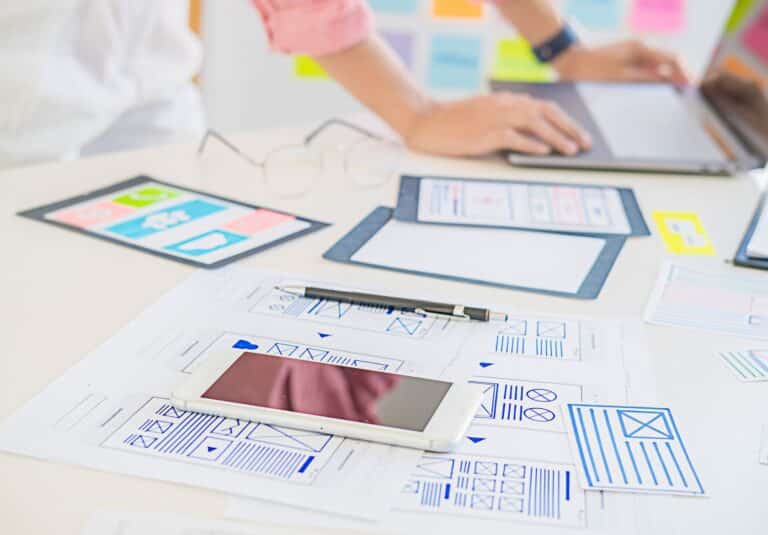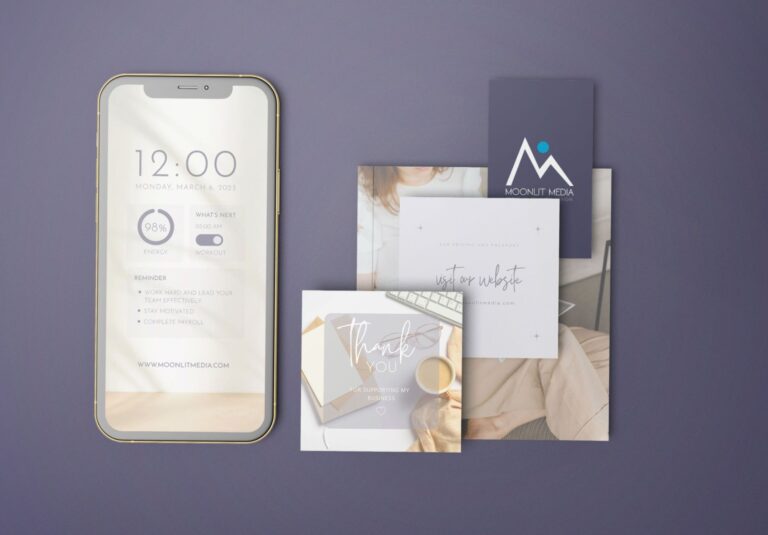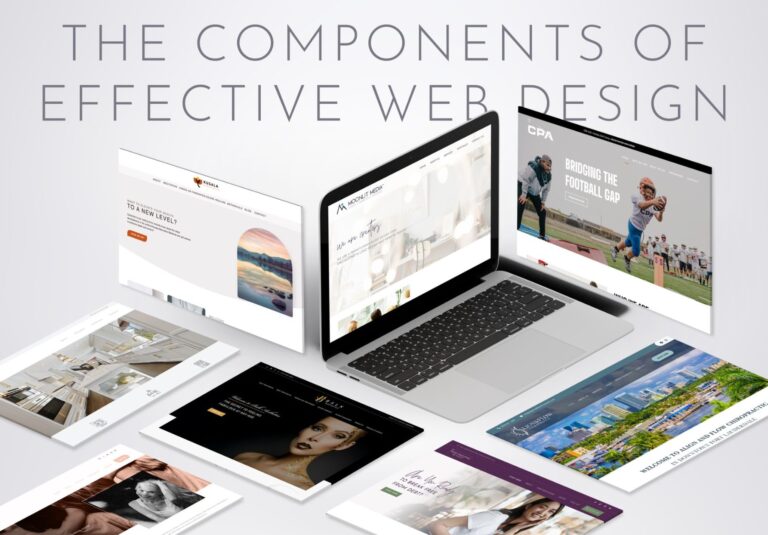Print design and web design may seem similar at first glance, but they are actually quite different in terms of their purpose, audience, and design constraints. Today, we’re taking a look at why design types can vary and the importance of having both available to your business.
Print Design
Print design is used for creating physical materials such as brochures, posters, and magazines. The design must be clear and legible when printed at a specific size and resolution, and it must also take into account the limitations of the printing process, such as color gamut and ink bleed.
In most cases, the audience for print design is often local or regional, and the materials are often distributed by mail, in stores, or in-person. Examples of print design include brochures, labels, business cards, t-shirts, stickers and ads.
Print design is unique in the amount of control both the designer and client have over an end product. In the world of design, print is one of the best examples of “What You See is What You Get” (WYSIWYG). This is why things can get complicated in the world of publishing.
For example, a print magazine may want to have a version of its publication online. The layout and design will need to be created in very different ways to see a publication that is both web and print designed. The only way to capture the publication in identical layouts is to use an Adobe PDF file. However, that format may not be practical for a web-based experience.
Web Design
Web design, on the other hand, is used for creating digital interfaces and user experiences for websites and applications. The design must be responsive and adapt to different screen sizes and resolutions, and it must also take into account the limitations of web browsers and devices.
The audience for web design is global and often anonymous, and the materials are accessible through a web browser or mobile application. This issue is further complicated by the vast number of browsers, apps, and other means that people use to access a site.
Print Design is Static, Web Design is Dynamic
Another key difference between print design and web design is the level of interactivity.
Print design is static, meaning that once it is printed, it cannot be changed. Web design is dynamic, meaning that it can change based on user input (such as clicking on a button or scrolling through a page).
This is a very big difference that can make or break your copywriting, ad services, and other campaigns. It is also a very important aspect of your brand kit.
Control of Final Product
Finally, there is a difference in the level of control and specificity of design. In print design, the designer has control over every aspect of the final product, including the paper stock and the printing process. For example, when an ad is printed in a magazine, everyone will see the same thing.
In web design, the designer does not have control over the final product because it is rendered by the browser or device. This means that even though the designer may have the perfect website designed in terms of size, color, and how fast it loads – the results that are seen can vary dramatically depending on your screen resolution, color settings, and type of equipment used (e.g., desktop vs. phone or tablet).
Responsive Design
This is just one reason why “responsive” layouts have become so popular. This type of framework allows each component (images, copy, or links) of a website to render according to the device used. While this does help with readability, it will not impact the variations in color on different monitors.
In conclusion, print design and web design are different in terms of their purpose, audience, design constraints, level of interactivity and control of the final product. Both require different design skills and knowledge. Luckily for you, Moonlit Media has several incredible designers available for both types of design.
As a business owner, it is important to understand the differences between web and print design and to be able to adapt to the specific requirements of each medium. If you’re not proficient in both web and print design, please contact us to help. These are important aspects of running a business and can impact your success.








